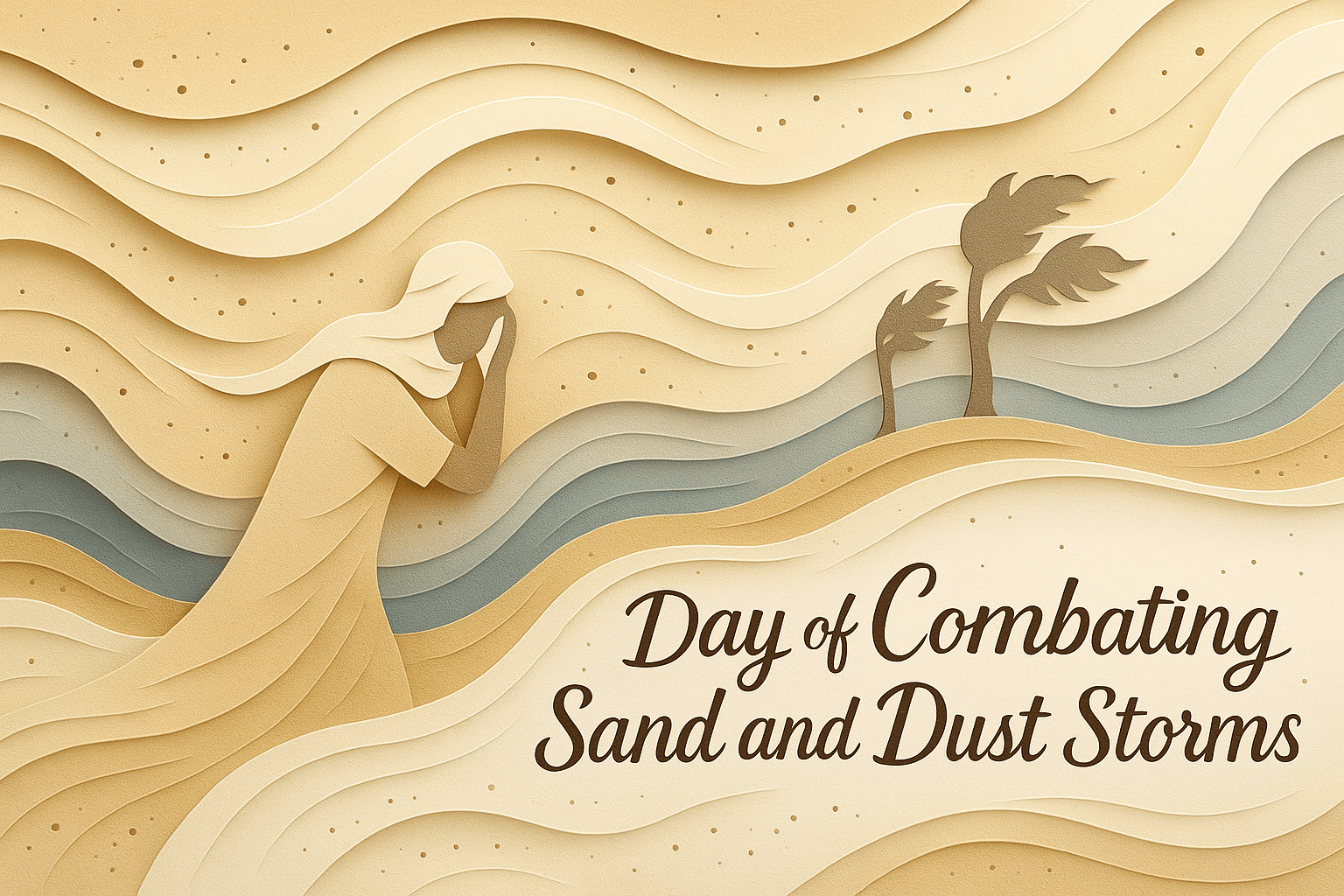What is the International Day of Combating Sand and Dust Storms?
The International Day of Combating Sand and Dust Storms is observed annually on July 12. This day aims to raise awareness about the significant environmental, health, and socio-economic impacts of sand and dust storms. These natural phenomena, intensified by human activities such as deforestation, desertification, and poor land management, affect millions of people worldwide. The observance encourages global cooperation to mitigate the effects of these storms and promote sustainable land and water management practices.
Sand and dust storms can transport harmful particles over long distances, contributing to air pollution and increasing the risk of respiratory diseases. They also contribute to soil erosion, threatening food security and the livelihoods of millions. By highlighting these issues, the International Day of Combating Sand and Dust Storms emphasizes the need for collective action to address the root causes and protect vulnerable communities.
History and Origin
The United Nations General Assembly proclaimed July 12 as the International Day of Combating Sand and Dust Storms through resolution A/RES/77/294. This decision underscores the growing concern over the transboundary nature of sand and dust storms and their far-reaching impacts on health, agriculture, and the environment. The resolution calls upon member states and relevant stakeholders to observe the day through education and activities aimed at raising public awareness.
The establishment of this day reflects the international community’s recognition of the need for coordinated efforts to combat sand and dust storms. It serves as a platform to share knowledge, develop strategies, and implement policies aimed at reducing the frequency and impact of these storms. The observance also highlights the importance of preserving and restoring ecosystems to enhance resilience against such environmental challenges.
Who participates in the International Day of Combating Sand and Dust Storms?
- Governments and policy-makers: develop and implement strategies to mitigate the effects of sand and dust storms
- Environmental organizations: conduct research and promote sustainable land management practices
- Health agencies: address the public health implications and provide guidance on protective measures
- Educational institutions: raise awareness through seminars, workshops, and educational programs
- Communities and individuals: engage in activities such as tree planting and soil conservation to reduce vulnerability
Slogans and Themes
The International Day of Combating Sand and Dust Storms focuses on themes such as environmental protection, public health, and sustainable development. Common slogans include “Protecting People from Sand and Dust Storms” and “Building Resilience Against Environmental Hazards.” These messages aim to inspire action and foster a sense of global responsibility in addressing the challenges posed by sand and dust storms.
Colors, Symbols, and Patterns
Colors
- Brown: represents the earth and the dust carried by the storms
- Blue: symbolizes the sky and the atmosphere affected by airborne particles
- Green: denotes the importance of vegetation in preventing land degradation
Symbols
- Dust clouds: depict the visual impact of sand and dust storms
- Trees and plants: signify the role of vegetation in stabilizing soil and reducing storm occurrence
- Masks: highlight the health precautions necessary during such events
Patterns
- Swirling motifs: represent the movement of dust and sand in the air
- Layered landscapes: illustrate the affected regions and the transition from arid to vegetated areas
- Geometric designs: reflect the structured approach needed for mitigation and adaptation strategies
Most used hashtags
- #SandAndDustStorms
- #CombatSDS
- #SustainableLandManagement
- #EnvironmentalAwareness
- #July12SDSDay
How do you observe the International Day of Combating Sand and Dust Storms?
- Participate in educational events: attend seminars and workshops focused on understanding and mitigating sand and dust storms
- Engage in community projects: take part in tree planting and land restoration activities to combat desertification
- Promote awareness: share information on social media using relevant hashtags to spread the message
- Support policy initiatives: advocate for policies that address the root causes and effects of sand and dust storms
- Implement protective measures: use masks and stay indoors during storms to safeguard health
Why is the International Day of Combating Sand and Dust Storms important?
This observance is crucial in highlighting the widespread impacts of sand and dust storms on health, agriculture, and the environment. By raising awareness and promoting collaborative efforts, the day encourages the implementation of effective strategies to mitigate these effects. It underscores the importance of sustainable land and water management practices in preventing land degradation and enhancing resilience against such environmental hazards.
Furthermore, the day serves as a reminder of the interconnectedness of environmental issues and the need for global cooperation. Addressing the challenges posed by sand and dust storms contributes to achieving broader goals related to climate change, public health, and sustainable development.
Features
- Mental Health
